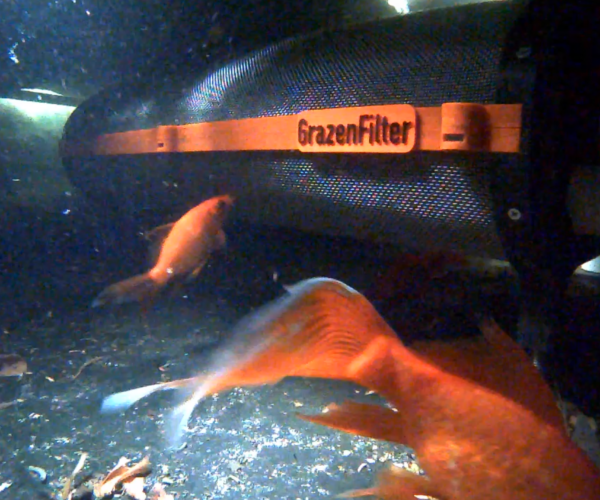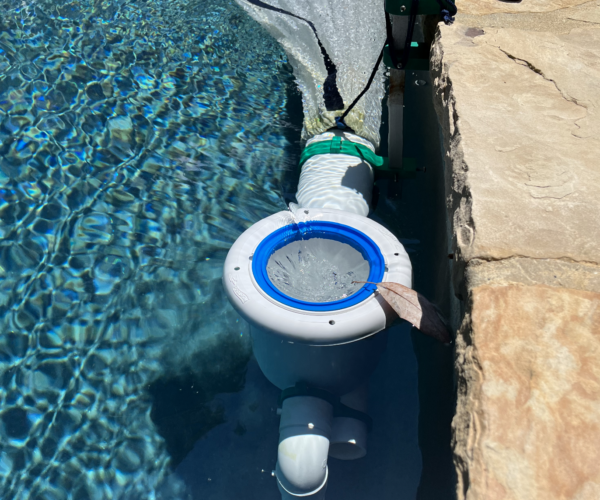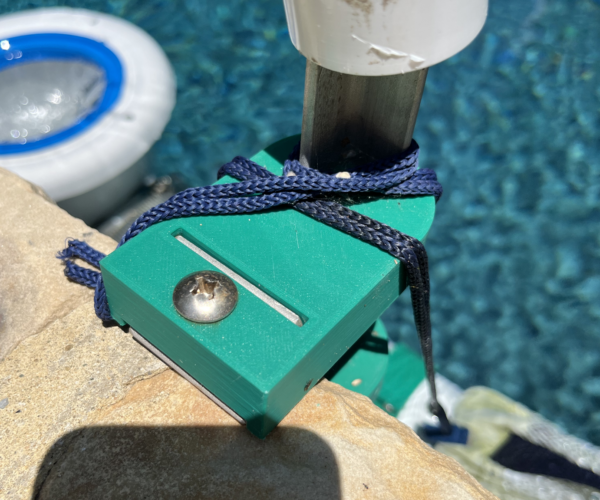Best Filament for Long-term Submerged Prints
I'm designing a product for underwater use in freshwater ponds. It will be submerged for for months, possibly years, at a time.
Assume that PETG is the way to go.
My only concern is that PETG is quite flexible. For this use case, however, a more rigid material is preferable. It's not required, as I can add stainless steel supports if necessary. But, I'm hoping to avoid that if I can.
Would appreciate any suggestions from you experts.
Thanks!
RE: Best Filament for Long-term Submerged Prints
I would more concentrate on surface area of the object. Like some special for-deep-waters paint or something like that put on the object.
RE: Best Filament for Long-term Submerged Prints
I'm designing a product for underwater use in freshwater ponds. It will be submerged for for months, possibly years, at a time.
Assume that PETG is the way to go.
My only concern is that PETG is quite flexible. For this use case, however, a more rigid material is preferable. It's not required, as I can add stainless steel supports if necessary. But, I'm hoping to avoid that if I can.
Would appreciate any suggestions from you experts.
Thanks!
I would go with PETG or PETG with CF. The flexibility will not hurt anything as long as it is not going to 1000s of feet.
--------------------
Chuck H
3D Printer Review Blog
RE: Best Filament for Long-term Submerged Prints
It's amazing how a few ribs can can make a part significantly more rigid. Some CAD packages have optimisation routines.
RE: Best Filament for Long-term Submerged Prints
I would have thought nylon but I have no evidence to support that.
RE: Best Filament for Long-term Submerged Prints
@towlerg
Nylon or nylon X would be good choices also. A ltitle more challenging to print but they would work.
--------------------
Chuck H
3D Printer Review Blog
RE: Best Filament for Long-term Submerged Prints
I'm designing a product for underwater use in freshwater ponds. It will be submerged for for months, possibly years, at a time.
At pond-bottom temperatures you might as well use PLA. At the surface, especially in very shallow, sun warmed water it is not suitable for more than six months or so.
PLA is significantly damaged by solar ultraviolet. Ultraviolet is filtered out by a few inches of water.
PLA is technically biodegradable: at hot composting temperatures it decomposes in a couple of years. In cool soil or cold water it lasts for tens of years, OK, eventually it degrades so you are not adding much to the long term plastic burden of the planet but for ordinary purposes it's just another plastic with a decent working life.
Cheerio,
RE: Best Filament for Long-term Submerged Prints
@diem
Not sure how biodegradible it is. That is another experiment.
--------------------
Chuck H
3D Printer Review Blog
RE: Best Filament for Long-term Submerged Prints
I use both PLA and PETG for fishing lures that I send down to 100 to 150 feet of water. At depth, the parts all will become infused with water in the internal channels - and even if you go 100% solid fill, water pressure will find a way. Now, a koi pond is not a high pressure situation, so you will probably do better. I now make it a practice to a) turn off G code for linear advance (helps with seepage) and then I use spray acrylic after the print to seal the part. This has made a big difference in the "waterproof-ness" of my lures.
RE: Best Filament for Long-term Submerged Prints
For the planters i make, i usually go with PLA, around 3 walls of atleast 0.8mm wide external perimuter extrusions.
I then use a sprayprimer on the inside (multiple thin layers).
Design for submerged is different i the way you have omni-directional force all around, as opposed to gravity and wicked effect in planters.
Also depending on the tupe of pond, leakage from the plastic might be a concern. I would choose a food-grade filament just to be safe.
Now i'm guessing, but PETg is more resiliant to "outer wear" then PLA as it stretches instead of scrapes.
If structural stiffness is needed, a simple exterior bracket-clamp might be all that's needed.
Of course, it also all depends of what the design is to be used for.
Might be easier to design it to allow for it to be waterlogged and schedule for replacing inplace of more expensive "beefing up". Improving the design in the process.
Prusa Mini+ kit. BondTech extruder. FW 5.1.2
Prusa MK3S+ kit. Stock. FW 3.11.0
Prusa MK3S+, used. Stock. FW 3.13.3
RE: Best Filament for Long-term Submerged Prints
Really appreciate the recommendations!
One thing I should have mentioned: the parts themselves need not be watertight. They're strictly structural and won't contain anything that needs to be protected from water. Water in the voids shouldn't be an issue. In fact, it would actually help as the device needs to be negatively buoyant (it sits on the bottom).
I simply need the material itself to withstand long-term water exposure, the printed layers to not delaminate over time, and as I said earlier, would be good if it could be more rigid than standard PETG.
Ordered some nylon and nylon fortified with carbon fiber today. Already have some PETG with CF. Just need to a new nozzle to print it. Ordered that, too!
RE: Best Filament for Long-term Submerged Prints
One thing I should have mentioned: the parts themselves need not be watertight. They're strictly structural and won't contain anything that needs to be protected from water. Water in the voids shouldn't be an issue. In fact, it would actually help as the device needs to be negatively buoyant (it sits on the bottom).
Choose one of the fills that allow all the voids to be connected and use a couple of strategically placed modifiers with zero perimeters to allow water to enter freely.
I simply need the material itself to withstand long-term water exposure, the printed layers to not delaminate over time, and as I said earlier, would be good if it could be more rigid than standard PETG.
I really do suggest you print a couple of PLA test parts and sink them where you can check on them over time - you might be surprised at the result.
Cheerio,
RE: Best Filament for Long-term Submerged Prints
I would advise against Nylon unless you are 100% sure the blend you are going with is ok with long term water exposure. At my old job we had nylon clips that shattered in a high humidity environment.
RE: Best Filament for Long-term Submerged Prints
@dragon1291
Yes, this is what I am finding out as well. Just doesn't hold up in submerged situations.
Last night I found a YouTube video from a company called VisionMiner discussing the pros and cons of Nylon with CF. The link is cued to the spot where he talks about how Nylon can degrade during long-term water submersion.
RE: Best Filament for Long-term Submerged Prints
Just don't use cubic infill, it will make the object float to the surface
RE: Best Filament for Long-term Submerged Prints
Any update on this issue?
i need to print some inlet and outlet parts for a reflecting pool. Outlets will be partially above water, inlets maybe 3 feet under. So, needs to be UV resistant.
They are threaded parts. Thinking PETG-CF. Not sure about epoxies, spray cans.
Don’t trust forum advice.
RE: Best Filament for Long-term Submerged Prints
I settled on Prusament PETG. It performs extremely well. Some parts have been completely submerged in my pond for over a year and there have been no problems whatsoever. For rigidity (mentioned in my original post), I added some of stainless steel structural components. See photo below.
I’ve also tried Atomic PETG-CF (carbon fiber). It works well, as you'd suspect. However, that's only been a few weeks. Really isn't necessary for my application, but I did introduce some test prints to see how it performs long-term.
For another project, Prusament PETG has also proven to be extremely UV resistant. I designed and printed some PETG parts to modify a leaf catching device for our swimming pool -- has both submerged and UV exposed components. Nine months in and they're still holding up very well. See photos below.
Also, TPU (specifically Ninjatek Cheetah) is a fantastic submersible material. If there's a need for flexibility, I highly recommend it.
RE: Best Filament for Long-term Submerged Prints
Just don't use cubic infill, it will make the object float to the surface
I just had a similar 'lesson learned', warranting a reprint.
We have one of those solar-powered bobber type remote temperature monitors for our pool in the back. The other day I noticed the receiver was reading no contact, so I checked things and the bobber had been sucked into the skimmer, out of daylight, and the internal battery ran down.
I printed a 3" cylindrical extension, to fit on the bottom of it to prevent it from getting sucked into the skimmer again. Unfortunately I just printed it with defaults, including the 15% infill, and since the extension is significantly less dense than water, it caused the thing to tip and made it vulnerable to getting sucked into the skimmer again.
It's reprinting now at 100% infill. Hopefully there will be no more issues.


